What made you turn to art and become an artist? (events, feelings, experiences...)
I started painting at the age of 16 when I wanted to become an architect in 2006. During my studies at the academy of architecture I progressed in all directions, but in my painting and drawing classes my work attracted the most attention and it motivated me to draw more and better. I wanted to create projects that went beyond what was required. From my second year at the architecture academy I got my first commissions to create paintings and portraits. There were more and more clients and the enthusiastic comments really motivated me.
What is your creative path, the techniques and subjects you've experimented with so far?
At the beginning of my artistic journey I studied human anatomy most of all and was fascinated by portrait painting. Within a few years I've done over 250 portraits on commission as well as many sketches and studies.
What are the 3 aspects that differentiate you from other artists, making your work unique?
One of the important aspects that sets me apart from other artists is not trying to stand out at the expense of something, but to stand out on my own. Filling myself with knowledge, learning and developing spiritually and never comparing myself to others. I believe it is my focus on my own spiritual and intellectual development that is reflected in my work, making it unique.
Where does your inspiration come from?
People inspire me the most. Because they have self-awareness, each one is unique and this is reflected in their appearance, facial expressions, eyes and image. Each person is a vast universe which you can study and love endlessly.
What is the intent of your art? What visions, feelings or sensations do you want to evoke in the viewer?
I create a series of paintings on different themes. My first series of 16 paintings is Sacred geometry, dedicated to ornaments and patterns created by nature in a micro or macro world. Each one has a picture of a person to define the scale. My second series "Woman lingo" is about women and their uniqueness and versatility. It consists mainly of portraits, each with a symbolism reflecting the essence of one particular image. Gradually the collection will be enriched by the new images I meet in my life.
What is the process of creating your work? Spontaneous or with a long preparatory process (technique, inspiration from classics or other)?
The process of creating paintings depends on encounters that I find interesting. When I meet new people I instantly pick up on their uniqueness, then I am interested in the details of their lives and experiences. Then I make a description of this character in my notes, associations and idea of the image. Then there is an obligatory photo shoot or search for interesting shots from the archive of this person for the future picture and after that I start sketching.
What techniques do you prefer? If yes, can you explain it?
I mainly paint oil paintings on canvases using traditional brushstroke techniques, sometimes I return to acrylic paints for experimentation, and I also paint with pencil on raw, untreated paper. I create paintings in a style I call "Composite Realism", which incorporates elements of intense realism combined with abstract patterns, surrealistic fairy tale scenes and symbolic imagery.
Are there innovative aspects to your work? Can you tell us which ones?
I often experiment with oil paints. I have invented my own unique technique where I use oil paints like watercolors. I love how oil paints are able to spread across the canvas, creating unique stains and streaks. Combined with classic traditional painting, it looks extraordinary, modern yet aesthetically pleasing.
Do you have a format or medium that you are most comfortable working with? If so, why?
The most comfortable canvas format for me is on average 1 meter long and 70 cm wide.
Where do you create your work? At home, in a shared or private studio? And how is your production organized in this space?
Due to a recent move to Australia, my studio is still being organized. But I have already partly equipped it and it is already comfortable for me to work in and receive visitors. I don't need much comfort to work. A chair and armchair, a floor easel and a couple of table easels for small formats of canvases. I have all my paints, brushes, sketch pad, mastichenes and other tools on a big table and a mobile art table.
Does your work lead you to travel to meet new collectors, to exhibit? If so, what do you get out of it?
Before I moved to Australia, I lived in China and there I participated many times in exhibitions, art shows and other art events in different cities in China. In October 2021 in the city of Yongqiao in Anhui province I was invited to an art residence for the opening of a large new gallery and purchased my paintings for my very first collection.
How do you envision the evolution of your work and your figure as an artist in the future?
I am a fairly confident artist who intends to evolve. To do this I plan to always learn from other artists, hold my own workshops, read art books, gain experience, participate in exhibitions and competitions and collaborate with galleries. I also dream of having my own collection of artists from all over the world and of opening my own art gallery.
What is the theme, style, or technique of your most recent artwork?
My last painting "Night" was painted in oil on a small canvas. In my favorite traditional oil technique, combined with symbolism and geometry. It is a portrait of an acquaintance of mine from my hometown of Odessa, a photo model now living in the USA. She inspired me to create a painting symbolizing the night as a beautiful place of tranquility and mysticism.
Can you tell us about your most important exhibition experience?
In 2021 I had my first solo exhibition supported by an architectural firm in Shanghai. It was perfect in terms of organization. More than 150 people were invited on the opening day.
If you could create a famous work of art history which one would you choose? And why would you choose it?
The painting "Permanent Memory" by Salvador Dali. Gala, Salvador's wife, came back that day from the movies and said that once a viewer sees the painting, they won't be able to forget it. Ever since I saw that painting as a child, I can't forget it.
If you could invite a famous artist (dead or living) to dinner, who would it be? How would you suggest he/she spend the evening?
Salvador Dali. I would take him out for shopping and coffee and ask him more about him and Gala.


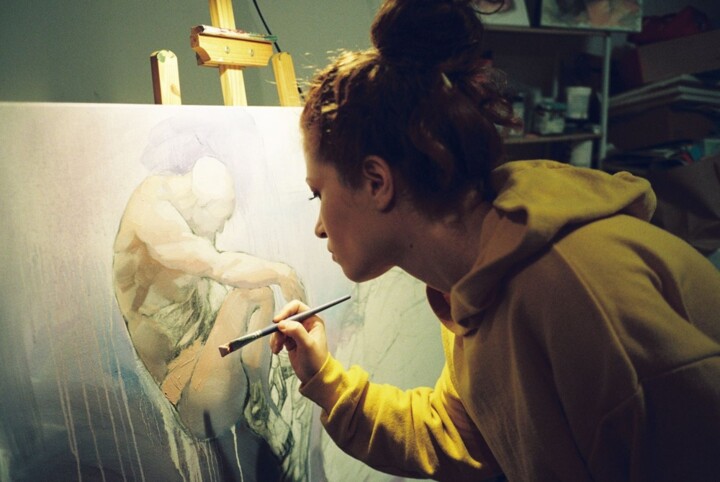
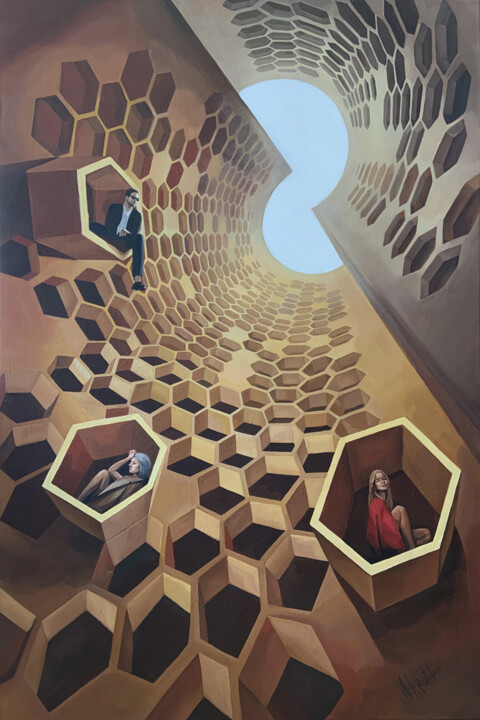
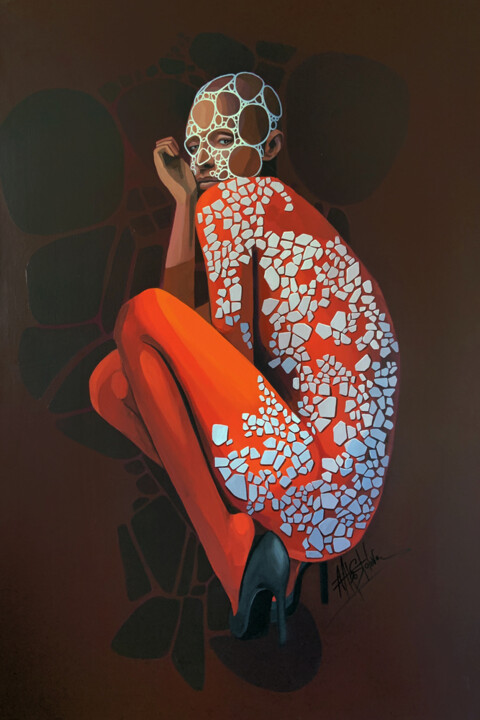
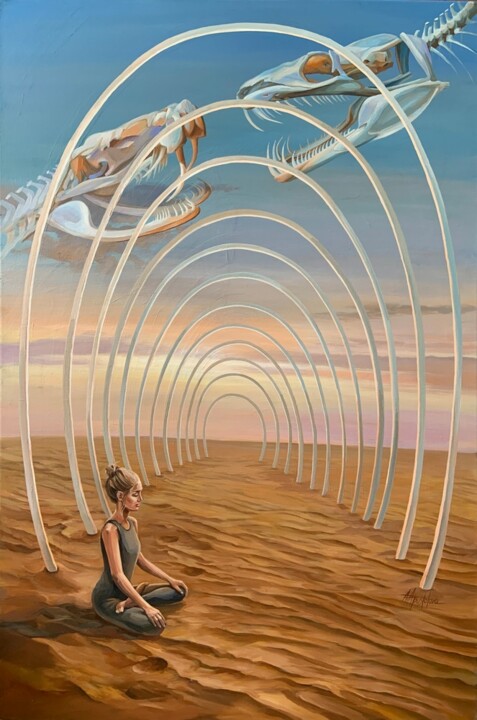
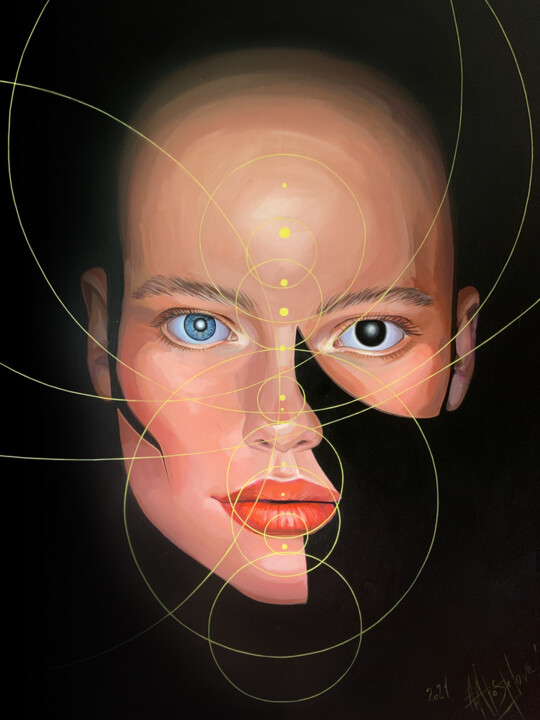
 Olimpia Gaia Martinelli
Olimpia Gaia Martinelli












